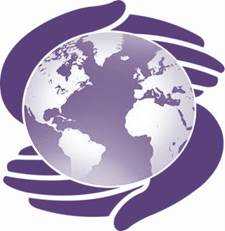Global Collaborations
NOTE: This page is archived for historical purposes and is no longer being maintained or updated.

The International Labor Organization estimates that, globally, about 2.3 million people die every year from occupational injury and illness. Of this total, about 350,000 deaths are due to fatal occupational injuries1; an enormous toll of suffering for workers and their families, employers and society. According to the World Health Organization (WHO) occupational risk factors contribute markedly to global illness and injury: 37% of back pain, 16% of hearing loss, 13% of Chronic Obstructive Pulmonary Disease (COPD) , 11% of asthma, 9% of Trachea, bronchus lung cancer, 8% of injuries, and 2% of leukemia2.
Global Collaborations at NIOSH contribute to the reduction of occupational diseases, injuries, and fatalities among all workers employed in the U.S. and globally through cultivating international partnerships and sharing pertinent information. These collaborations strive to fulfill their mission through high quality research, practical solutions, partnerships and moving research to practice. It is recognized that benefit flows both ways, and that NIOSH both contributes to and receives from its international collaborations.
Global Collaborations as Part of NIOSH Strategic Plan
The NIOSH 2010-2015 Strategic Plan includes global collaborations as its third goal.
Goal 3: Enhance international workplace safety and health through global collaborations.
- Take a leadership role in developing a global network of occupational health centers.
- Investigate alternative approaches to workplace illness and injury reduction and provide technical assistance to put solutions in place.
- Build global professional capacity to address workplace hazards through training, information sharing and research experience.
NIOSH Global Collaborations Program
The NIOSH Global Collaborations Program facilitates collaborations, partnerships, capacity building, and information exchange with global partners on sustainable specific projects and in areas of mutual interest to fill knowledge gaps and to enhance the impact of projects on workers both in the U.S. and in other countries.
References
- XIX World Congress on Safety and Health at Work - ILO Introductory Report: Global Trends and Challenges on Occupational Safety and Health, 2011 http://www.ilo.org/safework/info/publications/WCMS_162662/lang--it/index.htm
- Contribution of Occupational Risks to the Global Burden of Disease AJIM Special Issue December 2005 http://onlinelibrary.wiley.com/doi/10.1002/ajim.v48:6/issuetoc
- Page last reviewed: December 30, 2013 (archived document)
- Content source:
- National Institute for Occupational Safety and Health Office of the Director


 ShareCompartir
ShareCompartir